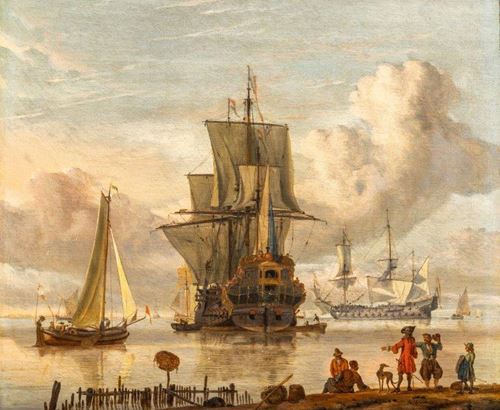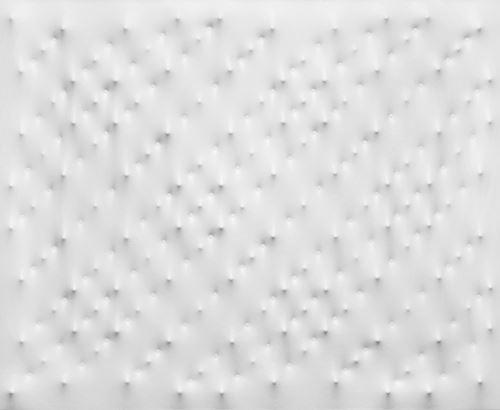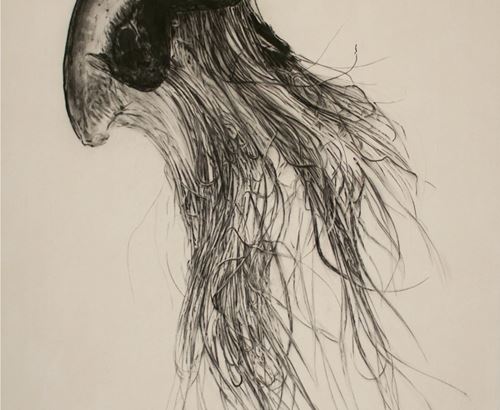Portrait of an Eight-Year-Old Boy with a Whippet on a Checkerboard Floor
description
Willem van der Vliet (Delft c. 1584 - Delft 1642)
signed, dated, and inscribed with the age of the sitter in the upper right AEta: 8. aº 1636/ W (?) (D)? van der Vliet fecit
oil on panel
50 ¾ x 35 ½ (129 x 90 cm.)
Provenance
Jean-Baptiste Eugène de Thiac (1806 - 1892), spouse of Éliza – Victorine Quentin (1806-1892)
granddaughter of Jean, 1st Comte de Ribes (1750 – 1830), acquired circa 1850 (as by Cuyp according to his estate inventory of 1892) and thus be descent in the family to the
Count and Countess de Ribes, Hôtel de la Bienfaisance, Paris until 2019
La Collection Ribes I, Les Trésors, Sotheby’s, Paris, December 11, 2019, lot 25
Literature
Alain R. Truong “Willem van der Vliet, Portrait of a Boy aged 8 Years in a Red Costume together with a Dog”, La Collection Ribes I, Les Trésors Paris, December 11, 2019, at www.alaintruong, illustrated
Detail Description
In The Netherlands the 1630s witnessed a rebellion by the younger generation against their elder’s manner of dress in which they rejected form-fitting black clothing and starched white ruffs in favor of looser garments characterized by flat collars, bright colors, golden buttons, silk ribbons and feathered hats. In this panel a resplendent young boy in red accompanied by a whippet stands in an interior with a checkerboard floor. While he shyly engages the viewer, his au currant outfit speaks volumes. His wide scallop-edged lace flat collar that covers his shoulders and is closed at the neck by a cord with tasseled ends, is quite spectacular. The intentionally loose-fitting doublet overcoat edged with lace trim has slashed sleeves, lace cuffs and gold buttons. Breeches had become wider, particularly around the waist and now reached the mid-calf. His are lace edged ending in rows of red ribbon rosettes that match those of his shoes. Lace was often more expensive than fabric and even jewelry, and frequently men’s clothes were more sumptuously adorned than women’s clothing. His stockings are silk, and his shoes butternut colored patterned with hole punches. Plainer fabric had also become popular with red, yellow and moss green favored colors. Hats now were wide-rimmed and decorated with feathers. Feathers were regarded as a sign of masculinity and self-confidence. The look originated in the French court and was then taken up by the young urban elite of the Dutch Republic, which assuredly the parents of this young boy would have been counted among.[1]
Our sitter is shown doffing his hat, a common courtesy in the seventeenth century, and was meant as a show of respect for and obedience to authority. When it was represented in family portraits the further intention was a display of proper breeding,[2] here given added weight by the sheer size of the hat. In his right hand he holds the leash of the seated whippet by his side. The dog’s collar is studded with gold and closed by a large gold clasp and loop. Pets were routinely painted in these works, but whippets were also regarded as good hunters. The right to hunt had long been the exclusive privilege of the nobility, restrictive rules that remained intact even throughout the eighteenth century.[3] Along with this inferred status, the dog is a metaphor often found in children’s portraits of the period, symbolic of docility and the need to rein in natural tendencies. This could be accomplished for both child and dog only through instruction and education. The quality of docility was also intended to refer to the development of traits that would form good and honorable character.[4]
The green velvet curtain to his right recalls the dynastic tradition of the curtained structures under which royals sat on ceremonial occasions.[5] Likewise the gold and tasseled cloth covered table of the background harks back to royal portraiture that displayed tables laden with objects bearing dynastic associations. Both curtain and table are further indications of power and rank.[6] Painted for posterity, this work is a testimonial to the family’s position as well as the embodiment of the feelings of pride, love and aspiration all parents hold for their children.
Willem van der Vliet’s known oeuvre is very small. He was one of Michiel van Miereveld’s most important pupils, who joined the Delft painters’ guild in 1615. He began as a history painter working in the Caravaggesque manner and only later turned to portraiture. By 1633 he was the headman of the guild along with Jacob Vosmaer. His nephew Hendrick van Vliet was his pupil. His career was continuously sustained through the support of prestigious patrons as was obviously the case with this commission.[7] Paintings by the artist formed part of the collection of museums in Amersfoort, Amsterdam, Delft, Detroit, Leipzig, London, Moscow, Paris and Stockholm among others.
[1] Benjamin B. Roberts, Sex, Drugs and Rock ‘n’ Roll in the Dutch Golden Age, Amsterdam University Press, 2014, pp. 62-65, 69, & 173; and Barbara Karl, “Lace and Status: Luxury, Power and Control in Early Modernity” in Threads of Power, Yale University Press, New Haven & London, 2022, p. 37.
[2] Wayne E. Frantis, Paragons of Virtue, Women and Domesticity in Seventeenth-Century Dutch Art, Cambridge University Press, Cambridge, 1995, p. 158.
[3] David William Davies, A Primer of Dutch Overseas Trade, Springer – Science & Business Media, B.V., Dordrecht, 1961, p. 148; and Scott A. Sullivan, The Dutch Gamepiece, Rowmant Allenheld Publishers, Totowa, New Jersey, 1984, p. 49.
[4] Jan Baptiste Bedaux, The Reality of Symbols, Gary Schwartz, SDV Publications, The Hague, 1990, pp. 113, 119-120.
[5] Lorne Campbell, Renaissance Portraits, Yale University Press, New Haven, 1990, p. 109.
[6] Leticia Ruiz Gómez, “Court Portraits in the Spanish Monarchy (1530 – 1660)” in The Spanish Portrait from El Greco to Picasso, Museo National del Prado, 2004, p. 166.
[7] Biographical information taken from Walter Liedtke, Vermeer and the Delft School, Metropolitan Museum of Art, New York, 2001, p. 29,48, 56, 180, & 418.

contact
Lawrence Steigrad Fine Arts
10023 New York
United States
T (212) 517-3643
M 9175091429
larry@steigrad.com
www.steigrad.com/





,theArtist’sBrother_ConstantijnHuygenstheYounger_T638324409643895319.jpg?width=500&height=410&mode=crop&format=jpg&scale=both&qlt=80)
